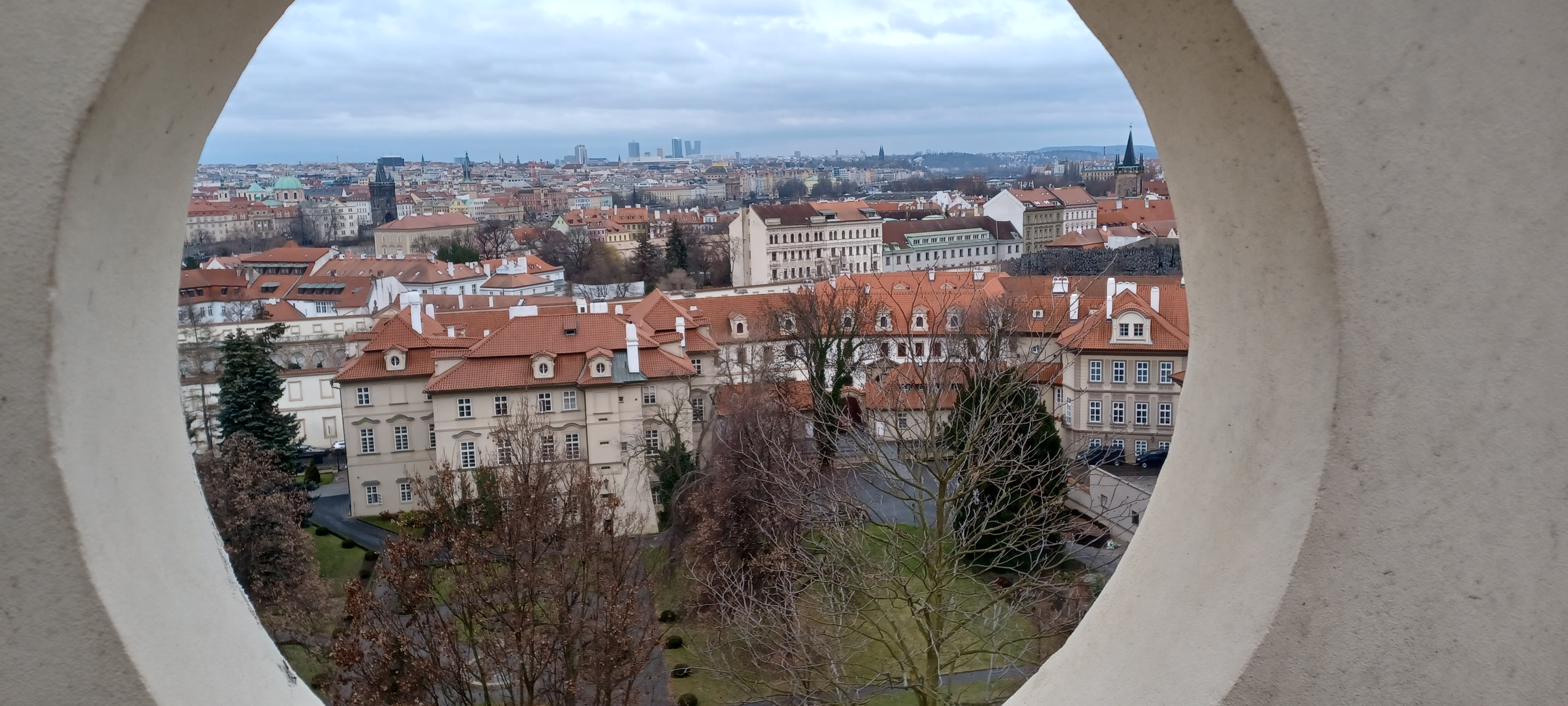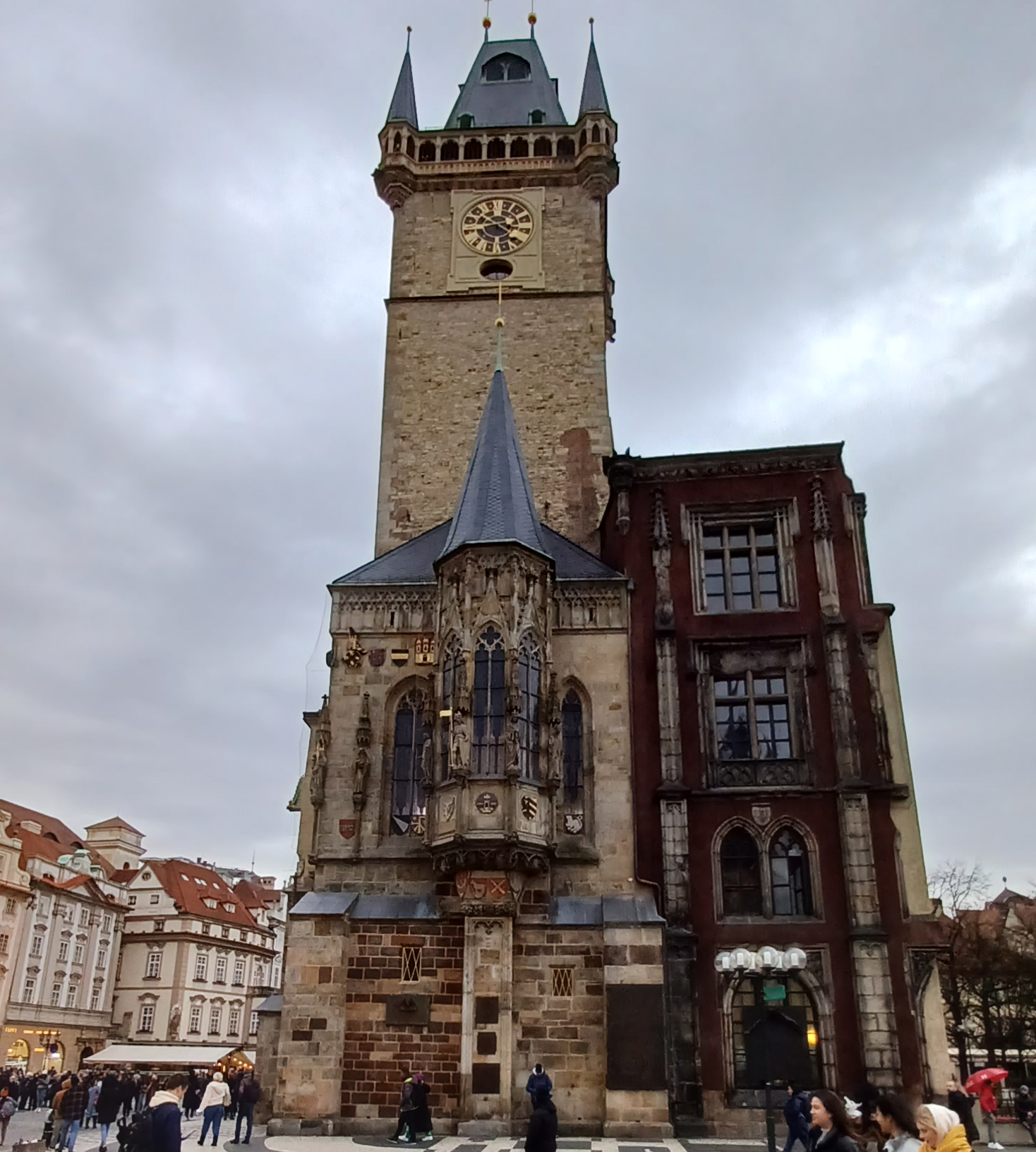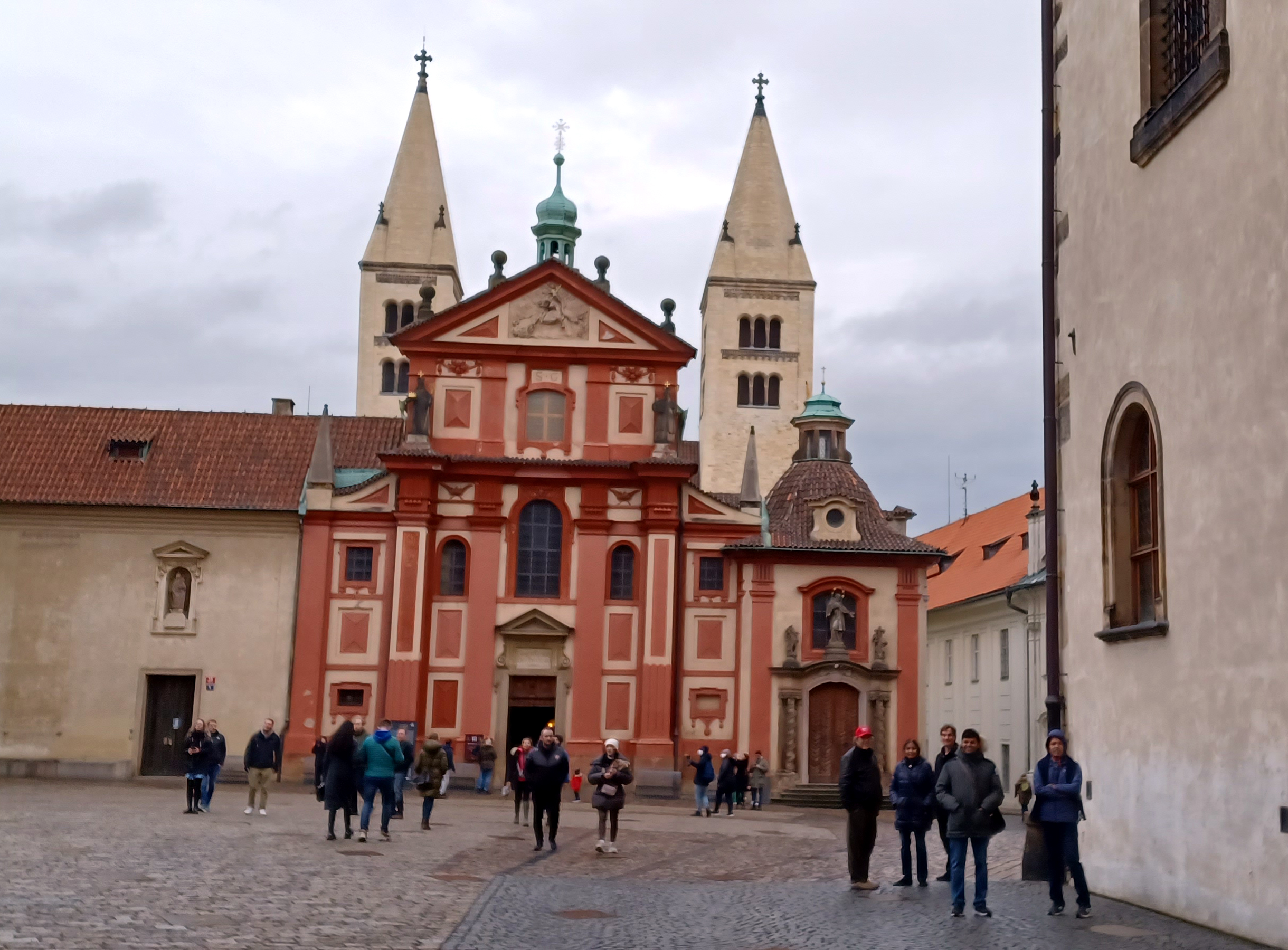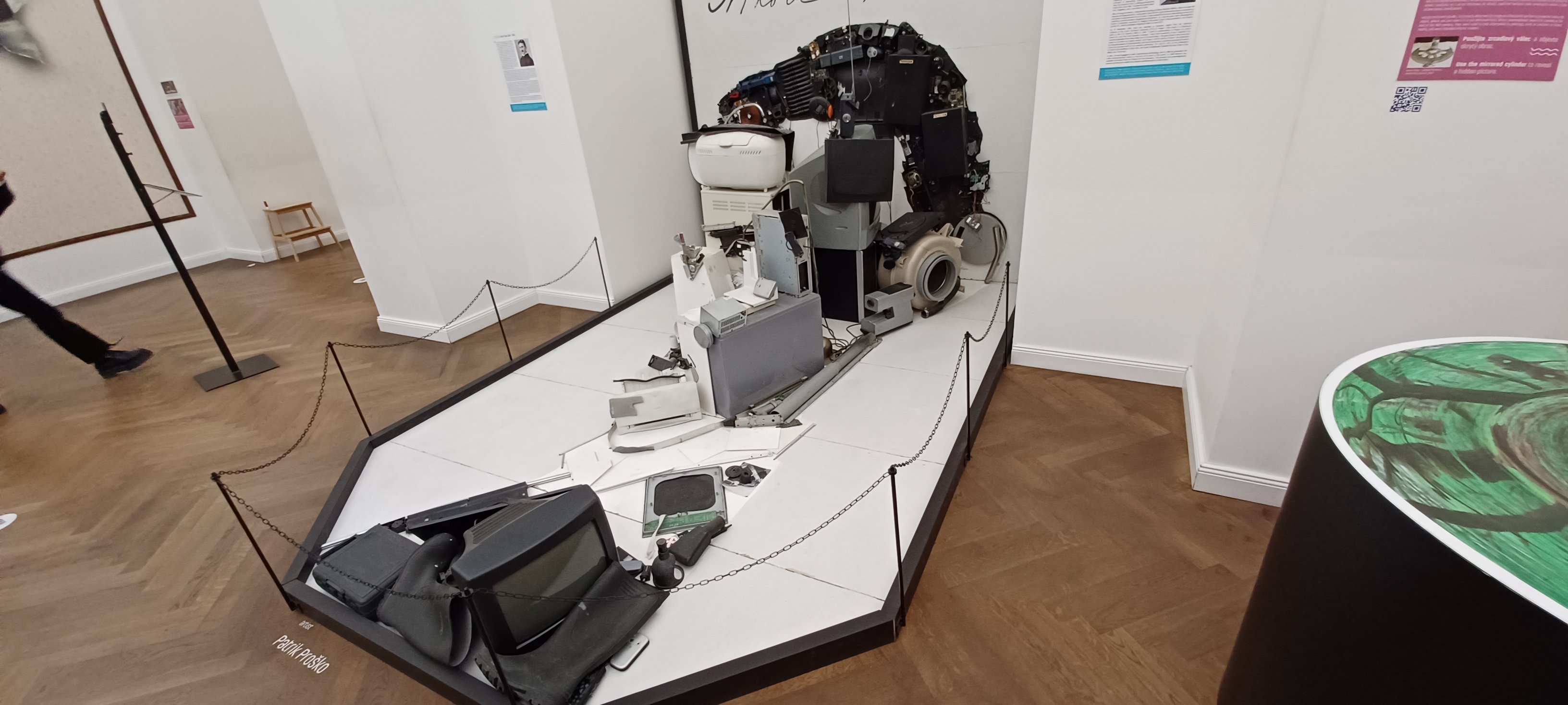| Czech Republic |
| CZECH REPUBLIC | Picture Description |


|
Czech Republic Map & Flag of the Czech Republic Known as Czechia Population : 10,705,384 (2022) Median age: 43.3 years Fertility rate: 1.49 children/woman(2022) Currency: Czech Koruny (CZK) GDP per capita: PPP $40,700 (2022) Population below poverty line: 10.1% Labor force - by occupation: Agriculture 2.8%, Industry 38%, Services 59.2% Source : Cia World Factbook After World War I, the Czechs and Slovaks of the former Austro-Hungarian Empire merged to form Czechoslovakia, a parliamentarian democracy. The peaceful "Velvet Revolution" swept the Communist Party from power at the end of 1989 and inaugurated a return to democratic rule and a market economy. On 1 January 1993, the country underwent a nonviolent "velvet divorce" into its two national components, the Czech Republic and Slovakia. The Czech Republic joined NATO in 1999 and the European Union in 2004. |
|---|---|
| Prague, Czech Republic / Feb 2023 |

|
Prague, Czech Republic Prague Skyline Skyline city-scape view of Prague. Prague has many famous cultural attractions. The main ones include Prague Castle, Charles Bridge, Old Town Square, Horologe, the Jewish Quarter, Petrin hill and Vysehrad. Since 1992, the historic center of Prague is in the UNESCO list of World Heritage Sites. |

|
Prague, Czech Republic Prague Skyline Prague ten major museums, theaters, galleries, cinemas, and historical exhibits. Charles University is the oldest university in Central Europe. 2018, gets 8.9 million international visitors annually and was listed as the sixth most visited European city after London, Paris, Rome, Antalya, and Istanbul. |

|
Prague, Czech Republic Charles Bridge The Old Town Bridge Tower was built as a triumphal arch to celebrate the reign of Emperor Charles IV and his son Wenceslas IV. Construction commences soon after the bridge foundation was laid in 1357. Master Otto was the first builder and then Michael of Savoy. Completed in 1370-1380, Emperor Charles IV conceived of the decor. Wenceslas IV added elements, symbol a kingfisher in spiralled cloth. In the Swedish seige of the Thirty Years' War the tower was devasted in 1648. |
|
Prague, Czech Republic Charles Bridge There are two towers on the Lesser Town end of the Charles Bridge, connected by a Gothic gate. Judith's Tower is the Romanesque-style lower one. The taller Lesser Town Tower was built as a proper bridge tower. Towers with a gate used to be an important part of town fortification in times when Lesser Town was an independent territory. Built of hand-chiselled sandstone blocks, the Lesser Town Bridge Tower is 147 ft (45m) high. It is the youngest part of the Charles Bridge, launched under the rule of King George of Podebrady in 1454. Architect Josef Mocker made the latest modifications in the late 19th century. |
|
Prague, Czech Republic Church of our Lady before Tyn This is a Gothic church that dominates over the Old Town Square of Prague. It has been the main church here since the 14th century. The church's two towers are 262 feet (80 m) high. Each tower's spire is topped by eight smaller spires in two layers of four. |
|
Prague, Czech Republic Jakubska Impression Museum/Gallery This Impressionism Gallery features works by owner and artist Alexandr Onishenko, Laszlo Kutas is located near the Prague Castle. It is located at Thunovska 18. They have a facebook page and website. There are a lot of nice paintings and sculptures therein. |
|
Prague, Czech Republic Havel Market (Havelske Trziste) The Havel Market is open all year. It has fruits, vegetables, candy, spices, confections, traditional souvenirs, handicrafts, textiles, and Czech specialties. It has been a permanent market since 1232. It is located on Havelska street. It is open everyday from 7AM to 7PM. |
|
Prague, Czech Republic Duck Boutique This rather unusual store caught my eye. As you can see it sells variety of Duckies and attracts tourists who are duck enthusiasts! |


|
Prague, Czech Republic Old Town Square Old Town Square has many architectural styles, including the Gothic Church of Our Lady before Tyn, the Baroque St. Nicholas Church, and Old Town hall. Old Town Square also has an art museum of the Czech National Gallery is located in the Kinsky Palace. |

|
Prague, Czech Republic Old Town Hall Tower The Old Town Hall is one of the most significant monuments in the Czech Republic. It was established in 1338 as the administrative seat of the Old Town of Prague and it is now used for ceremonial purposes. It has five medieval houses. Their interiors testify to the evolution of the town hall complex. There is a gothic chapel from the 14th century, a council hall from the 15th and a modern assembly hall from the Art Nouveau era and a Romanesque underground. The Town Hall's most distinctive focal point is the rectangular tower from the 14th century. It was the highest structure in all of Prague then. |
|
Prague, Czech Republic Prague Orloj Horologe Prague Orloj is a medieval astronomical clock mounted on south wall of the Old Town Hall. The clock was installed in 1410, making it the third-oldest astronomical clock in the world and the oldest one still in operation. According to local legend, the city will suffer if the clock is neglected and its good operation is placed in jeopardy; a ghost, mounted on the clock, was supposed to nod its head in confirmation. According to the legend, the only hope was represented by a boy born on New Year's night |
|
Prague, Czech Republic Prague Orloj Horologe The Prague Orloj clock mechanism has three components: the astronomical dial with the position of the Sun and Moon in the sky and has astronomical details; statues of Catholic saints stand on either side of the clock; "The Walk of the Apostles", an hourly show of moving Apostle figures and other sculptures, notably a figure of a skeleton that represents Death, striking the time; and a calendar dial with medallions representing the months. |

|
Prague, Czech Republic Golz-Kinsky Palace (Art Museum) This was a former palace built in Rococo style owned by the Kinsky noble family. Now it is an art museum located on Old Town Square in the Old Town area of Prague. It was originally built for the Golz family between 1755 and 1765. Franz Kafka's father, Hermann Kafka, was a haberdasher with a store at the palace. Franz Kafka attended secondary school at the palace, from 1893 until 1901. The palace housed the legation of the Republic of Poland between 1922-1934. |
|
Prague, Czech Republic The Church of Saint Nicholas The Church of Saint Nicholas (Czech: Kostel svateho Mikulase) is a Baroque church in the Lesser Town of Prague. It was built between 1704-1755 over a former Gothic Church also dedicated to Saint Nicholas. It is a quinessential example of Prague Baroque architectural style, meant to be dominating, showy, and impressive. Count Wenceslaus Kolowrat-Liebsteinsky from the prominent Czech House of Kolowrat was the largest patron of The church of St. Nicholas. He donated his entire estate, worth 178,500 gold, for the construction of the church and the adjacent buildings in Prague in Mala Strana. |


|
Prague, Czech Republic Prague Castle The Prague Castle complex encloses an area of 753,474 square feet. The complex includes chateauxs, palaces and 26 houses and six gardens. The Prague castle is the most visited sight in Prague, the home of the President of the Czech Republic, and a UNESCO World Heritage site. The Wallenstein Palace is home to the Czech Senate. In 880, Prince Borivoj began construction of the Church of the Virgin Mary. It was originally built with a moat and stone clay rampart. The St. Vitus Church and St. George Church were built in the 10th century. In 1541, a fire destroyed parts of the Prague Castle. The Habsburgs added buildings in the Renaissance style. The Third Defenestration of Prague in 1618 damaged it. In the 16th century, alchemists in the Golden Lane tried to turn metal into gold and Rudolf II built a garden of tropical plants. The last major rebuilding of it began in the 18th century by Empress Maria Theresa. In 1918, the Prague Castle became the seat of the president, and the New Royal Palace was renovated. |

|
Prague, Czech Republic Archbishop Palace This was the Archbishop's Palace in Prague that was the residence of Cardinal Friedrich Prince zu Schwarzenberg. It is located in the Prague Castle complex. He was a Catholic Cardinal of the nineteenth century in Austria and the Kingdom of Bohemia and a member of the House of Schwarzenberg. As Archbishop of Salzburg, his main priority over the following decade was the elimination of Protestantism in his diocese. |

|
Prague, Czech Republic Great South Tower The Great South Tower of St. Vitus Cathedral. It is 328 feet (100 metres) high. It has 287 steps to the top. Construction was started by the architect Peter Parler in the 14th century in Gothic style. In the 16th century, the view gallery and helmet were added; replaced by a new dome in the 18th century. It has the biggest bell in the country, weighing about 15 tons and called Zikmund. The bell is from 1549. It has relief decorations with prints of coins and medals. 6 bell-ringers are needed to swing the bell: 4 to swing the bell, 2 for the clapper. |

|
Prague, Czech Republic Karel IV (Charles IV) King Karel IV (Charles IV) is one of the most famous personalities in Czech history. His image is commemorated on the 100 Czech Koruna banknote (CZK). The Hundred Years' War was a England vs France conflict from 1337 to 1453. During the war, in 1346, the Battle of Krescak took place. The Czech King Jan Lucembursky fought on the side of France. The battle ended with the victory of England and the death of Jan Lucembursky, the Czech throne was succeeded by his son Karel IV (Charles IV). Karel IV (Charles IV) was the first Bohemian king who also became Emperor of the Holy Roman Empire. As a Czech king, he became famous for founding the University of Prague, which bears his name, the construction of the New Town of Prague, the building of the Charles Bridge over the Vltava River in Prague, and the construction of Karlstejn Castle. Together with Jan, they started the construction of the St. Vitus Cathedral. Karel IV (Charles IV) also expanded the Czech state in a north-eastern direction. |

|
Prague, Czech Republic New Royal Palace (Novy Kralovsky Palace) This is a picture of the New Royal Palace. Notice the guards in official uniforms standing at attention in the guard houses. In 1918 the Prague Castle became the seat of the president, and the New Royal Palace was renovated. Later in the century, 1939, the castle became the headquarters of Reinhard Heydrich, a Hitler supporter. He invited Hitler to spend a night in the Prague Castle. |

|
Prague, Czech Republic St. George's Basilica This is a key religious landmark in Prague. It boasts a well-preserved Romanesque architecture. The basilica has a long history and is recognized as the second oldest church in Prague. Located within the Prague Castle, St. George's Basilica is the oldest church building in the complex. The basilica was founded by Vratislaus I of Bohemia in 920. It is dedicated to Saint George. In 1962, the building was declared a national cultural monument and converted into a concert hall. Between 1969 and 1975, it was converted into an concert hall and exhibition space. It houses the 19th century Bohemian Art Collection of National Gallery Prague. |

|
Prague, Czech Republic The Metropolitan Cathedral of Saints Vitus, Wenceslaus and Adalbert The Metropolitan Cathedral of Saints Vitus, Wenceslaus and Adalbert (Czech: metropolitni katedrala svateho Vita, Vaclava a Vojtecha) is a Roman Catholic metropolitan cathedral in the heart of Prague. It is the seat of the Archbishop of Prague. Until 1997, the cathedral was dedicated only to Saint Vitus, and is still commonly called St. Vitus Cathedral. The cathedral is the most prominent and visible part of the Prague castle from a distance. The cathedral exemplifies Gothic architecture. It is the largest and most important church in the country. It contains the tombs of many Bohemian kings and Holy Roman Emperors. The cathedral is under the ownership of the Czech government as part of the Prague Castle complex. The Cathedral dimensions are 407 ft x 197 ft(124m x 60m), the main tower is 337ft (102.8 m) high, front towers are 269 ft (82 m), the arch height is 109 ft (33.2 m). In the Vitus Cathedral, the Bohemian Crown Jewels, including the St. Wenceslas crown royal scepter and a coronation cloak, are stored in a chamber with seven locks. The keys to these locks are held by the President, Prime Minister, Prague Archbishop, and four other officials. The jewels go on exhibit every five years. |

|
Prague, Czech Republic The Tuscany Palace (Toskansky palac) The Tuscany Palace was built when Lobkowitz family homes were demolished. Count Thun of Hohestein began the construction of this building in 1690 It is located close to the Prague Castle. He died during it's construction which was purchased by Anna Marie Frances, Duchess of Tuscany, in 1718. She completed its construction. It has a majestic triple storied Baroque structure with 4 wings, a huge courtyard and 2 fountains. It's facade has 7 seven sculptures depicting the the seven liberal arts and two coat of arms of Tuscany. The palace was renovated in the 20th century and is now the office of Ministry of Foreign Affairs of the Czech Republic. |
|
Prague, Czech Republic Tram (Streetcar) We rode in the Tram. The above ground tram is a modern, clean, convenient way to get around Prague. It was very easy to use and had digital readout for upcoming stops. Trams are an inherent part of Prague. They are operated by the Public Transit Co. Inc that operates the largest tram-line system in the country There are 1,000 trams in operation. Prague's tram network operates on 93 miles (150 kilometres) of double tracks with 1435 mm track gauge. There are 600 tram stops on 35 regular tram lines (26 during the day and 9 at night). Trams handled 25% of passenger traffic handling 350 million travelers in the capital every year. The subway is also fantastic, clean, modern, extensive, timely, and convenient to use! |


|
Prague, Czech Republic Trdelnik Trdelnik is a spit cake made from rolled dough wrapped around a stick, then grilled and topped with sugar and walnut mix. The first trdelnik was baked in the 17th century in a German community, in Transylvania (now Romania). The Hungarians spread it to Central Europe appearing in Czech in the 19th century. Historically, Trdelnik was an festive pastry used in important events such as baptisms, weddings and celebrations. Eventually fading from popularity it experienced a resurgence in the 21st century due to stalls and festivals. The traditional trdelnik is baked today in Germany, Austria, Luxembourg, Austria, Lithuania and Poland. Trdelnik originally had sweet fillings: ice cream, chocolate, pistachios, almonds, even gummy bears, coconut flakes. Nowadays, it can be made with meatloaf and cabbage, bacon, sausage and fried onions, mozzarella and tomatoes. |

|
Prague, Czech Republic U Stupartu This charming little restaurant has live music. It offers a variety of entres including traditional Czech dishes. It is located in Old Town in Prague. I learned that many Czech restaurants and indeed in many places in Europe blankets are offered to their patrons to keep them warm while they dine! |


|
Prague, Czech Republic The Museum for Illusion and Trick Art The Illusion Art Museum Prague (IAM Prague) is the Czech Republic's first museum dedicated to illusion and trick art. It is located in the heart of Prague between Old Town Square and Wenceslas Square. Here is an anamorphic installations to render Nikola Tesla. There are many other displays that use famous historical figures in trick art and spatial illusions. |

|
Prague, Czech Republic The Museum for Illusion and Trick Art The Illusion and Trick Art Museum's exhibits modernize techniques of creating illusions in art into the 21st century's selfie and social media age. It encourages guests to touch and interact with all of its exhibits. |

|
Prague, Czech Republic The Museum for Illusion and Trick Art Some of the works are from recognized artists such as Patrick Hughes and Patrik Prosko. It also showcases local artists including Ivana Stenclova and Ladislav Vlna. |

|
Prague, Czech Republic The Museum for Illusion and Trick Art There are a number of wonderful paintings that appear to be three-dimensional when viewed from a certain perspective. Here, I appear to be knighted where typically a sword would be tapped on each shoulder. |
|
Prague, Czech Republic KFC & McDonald's A KFC 500 meters ahead sign on the street. KFC is unique enough that it can be used as a directionl landmark and apparently popular enough to warrant a road sign. I also saw McDonald's signs. |
|
Prague, Czech Republic Public Water Closet (Toilet) Public Bathrooms can be difficult to find in many large cities. Prague provides some public water closets on the street. They are not too common but speak favorably about the city. I saw also several money exchange services in the Old Town. |

|
Prague, Czech Republic Dusan Sidlo This is my friend Dusan Sidlo that I got to meet in person in Prague! He was helpful in describing the importance of the King Karel IV (Charles IV) and Trdelnik entries on this page. This picture was taken at the Vienna House hotel. He is holding the book I published, The Four Elements of Thinking |

|
Prague, Czech Republic Vienna House Diplomat Prague Hotel I stayed at the Vienna House, located near the Vaclav Havel Prague airport. This is a 4-star Hotel features a luggage room, bar, gift shop, spa, gym, cars for rent, hot tub, and sauna. The Dejvicka subway station is just a 5 minute walk from the hotel. It is a 35 minute walk or 10 minute subway ride to the Prague Caslte and Old Town Historic Square. Guests can enjoy a daily buffet breakfast with an amazing spread. The Bull & Bonito restaurant has Mediterranean cuisine. The Thakurova bus station is 5 minutes away from it. |